Forums
- Forums
- Duggy's Reference Hangar
- Luftwaffe Library
- Junkers Ju 188
Junkers Ju 188
Post a reply
- Go to Previous topic
- Go to Next topic
- Go to Welcome
- Go to Introduce Yourself
- Go to General Discussion
- Go to Screenshots, Images and Videos
- Go to Off topic
- Go to Works in Progress
- Go to Skinning Tips / Tutorials
- Go to Skin Requests
- Go to IJAAF Library
- Go to Luftwaffe Library
- Go to RAF Library
- Go to USAAF / USN Library
- Go to Misc Library
- Go to The Ops Room
- Go to Made in Germany
- Go to Campaigns and Missions
- Go to Works in Progress
- Go to Juri's Air-Raid Shelter
- Go to Campaigns and Missions
- Go to Works in Progress
- Go to Skinpacks
- Go to External Projects Discussion
- Go to Books & Resources
-
9 years agoSat Nov 11 2023, 10:18amDuggy
 Main AdminThe Junkers Ju 188 was a German Luftwaffe high-performance medium bomber built during World War II, the planned follow-up to the famed Ju 88 with better performance and payload. It was produced only in limited numbers, due both to the presence of improved versions of the Ju 88, as well as the deteriorating war condition and the resulting focus on fighter production.
Main AdminThe Junkers Ju 188 was a German Luftwaffe high-performance medium bomber built during World War II, the planned follow-up to the famed Ju 88 with better performance and payload. It was produced only in limited numbers, due both to the presence of improved versions of the Ju 88, as well as the deteriorating war condition and the resulting focus on fighter production.
Background
In 1936, Junkers submitted proposals for the Ju 85 and Ju 88 into competition for the new standardized Luftwaffe high-speed tactical bomber, known as the Schnellbomber (fast bomber). The two designs were almost identical, differing only in that the Ju 85 used a twin-rudder and the Ju 88 a single fin. At the same time, they offered modified versions of each as the Ju 85B and Ju 88B, again similar to the original designs but using an "egg shaped" stepless cockpit forward fuselage design that was a large window, another example of the "bullet-nose" design philosophy that almost all new German bomber designs exhibited, from the time of the Heinkel He 111P. The new nose design for the Ju 88B also tightly integrated the forward end of the undernose Bola ventral gondola defensive gun position into the newer nose design, when compared to the "added-on" Bola unit pioneered on the Ju 88 V7 prototype. This meant the Ju 88B offered somewhat lower drag and better visibility. At the time, this was considered too radical and the Ju 88A with its simpler fighter-like "stepped" cockpit won the contest.
By 1939, the original Ju 88 had evolved with considerably more window area but in a fashion that was not well streamlined, with a "beetle's eye" faceted bombardier's glazed nose and a well-framed two-part "greenhouse" canopy for the cockpit, the two assemblies of well-framed cabin glazing separated by the sheetmetal of the upper fuselage nose. The Reich Air Ministry (RLM) was in the process of ordering a "second generation" bomber in a project known as "Bomber B" but this was extensively delayed due to the non-delivery of the large 2,500 PS (1,840 kW, 2,470 hp)-class engines, like Junkers' Jumo 222 inline engine, that the designs would rely on. Although Junkers' Ju 288 was leading the contest, there was no delivery date on the engines and the Ju 88B project was re-submitted as a stop-gap. For this version, they used the latest short-wing Ju 88 A-1 airframe as a baseline with the new stepless cockpit design, with the new Junkers Jumo 213 engine, which had recently started bench testing and was expected to deliver 1,500 PS (1,100 kW, 1,480 hp) and required a redesigned annular radiator system for engine and oil cooling.
The RLM also stipulated that the aircraft should also be able to accept the BMW 801 radial engine in a Kraftei (power-egg) unitized installation, with no modification to the engine nacelles. The RLM was not impressed with the new design, as it offered only small improvements over the Ju 88A model in service but suggested that Junkers continue with the prototype work anyway and that they consider fitting the design with the BMW 139 radial. This engine was cancelled only a few weeks later and all designs based on it moved to the newer and more powerful BMW 801.
Prototypes, Ju 88 B-0
The prototype Ju 88B V1, D-AUVS, flew for the first time with the 801A/B engines in early 1940. The fuselage and tail surfaces were identical to the Ju 88 A-1, which presented a problem: with the extra power, 1,560 PS (1,150 kW, 1,540 hp), the design could now carry considerably more load than the small bomb bay could fit. An additional external shackle was then added to each wing well outside the engines, although using the rack would seriously hamper performance.
During the summer, a pre-production run of 10 Ju 88 B-0 based on the pre-production Ju 88 A-4 airframes were delivered. The A-4 used a longer wing of 20.08 m (65 ft 10? in) span from new rounded wingtips for better altitude performance, when compared to the initial Ju 88A-1's shorter 18.26 meter (59 ft 10.75 in) span, but attention to streamlining and new "pointed" wing tips, somewhat resembling those fitted to the British Spitfire Mks.VII and VIII for their own intended high-altitude flight requirements, kept drag to about what it was earlier. The airframe changes moved the center of gravity slightly, so the glazed "cockpit" area was made slightly longer to re-balance the aircraft, while also offering better visibility for other members of the crew.
Service tests were all successful, and the pilots generally lauded the new cockpit design. However, the RLM still remained unconvinced that the small improvement in performance over the existing A-5's and future A-4's was worth investing time in. Instead, the pre-production models were modified as long-range reconnaissance aircraft by removing the guns, bombsights and external bomb shackles, and fitting fuel tanks into the bomb bay.
Several of the airframes were retained by Junkers for further development. One of these was fitted with the slightly updated 801L engines and a small power-operated turret on the extreme top of the cockpit mounting a 13 mm (.51 in) MG 131 machine gun.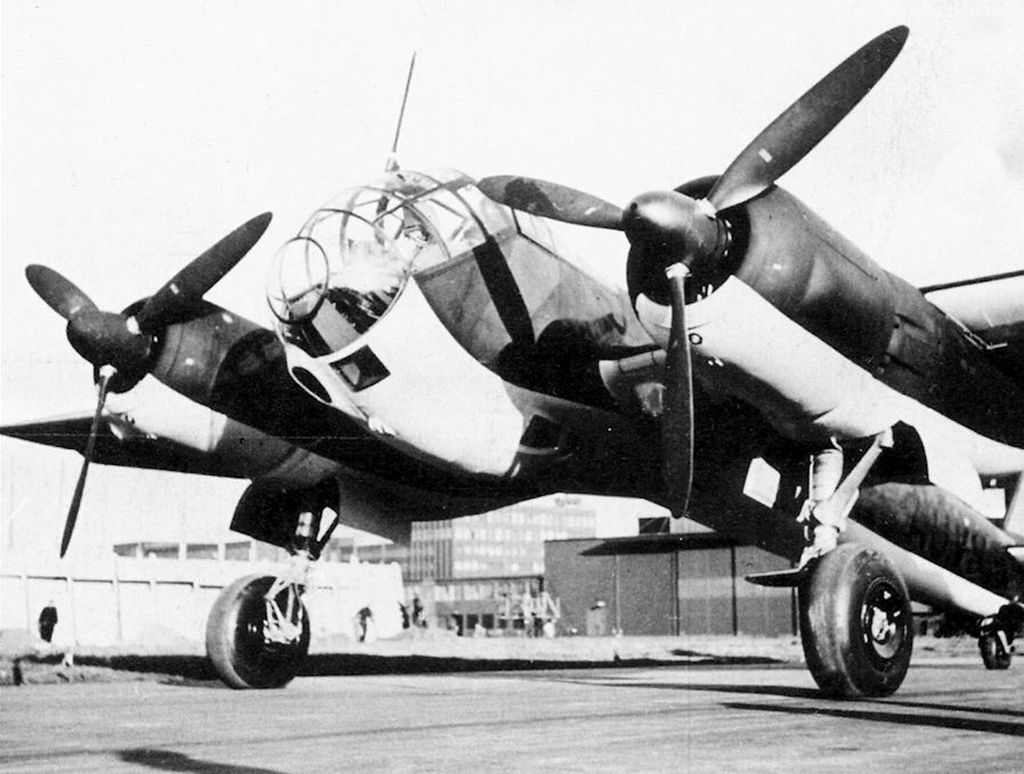
Ju 188
By 1942, it was becoming clear that the Junkers' firm's competitor in the important Bomber B program, the Ju 288 was not going to be ready soon, and at the same time the Ju 88s were increasingly at the mercy of a rapidly improving RAF and Soviet VVS. The RLM finally decided that even the small gains in performance in the Ju 88B were worth considering, and asked Junkers for a series of upgrades as the Ju 188.
The sole Ju 88 E-0 was modified with several additional guns, another 13 mm (.51 in) MG 131 firing rearward just below the turret, one firing forward through the nose, and the twinned 7.92 mm (.312 in) MG 81Z machine guns in the integrated ventral Bola gondola firing rearward. Two other airframes had their engines and outer wings removed to act as testbeds for water ditching, as it was planned to use the Ju 188 in long overwater flights against British shipping. A second Ju 188 test airframe was also built up from another Ju 88 A-4, this one including a larger, more trapezoidal vertical tail surface set to provide more directional control at higher altitudes, a feature also used on future Ju 88 models, most importantly on the Ju 88G night fighters. Originally known as Ju 88 V44, this airframe was later designated Ju 188 V1.
In October 1942, the program was given the go-ahead to start planning for production. A second prototype was delivered in January, which moved the outer bomb shackles to a position inboard of the engines. Both started testing the dive bombing system installed in the 88 A-4 in February. The RLM then asked for another change, allowing the aircraft to mount either the BMW 801 or Jumo 213 engines as a complete Kraftei, or "power egg" unitized engine installation, that would simply be bolted on and hooked up. Concerns about the Jumo 213, now years overdue, were offset by this engine's better altitude performance, so it made sense to delay the aircraft slightly if that meant it could switch to the 213 as soon as they became available. The second Ju 188 V1 prototype was flown in at Rechlin between September and November 1943.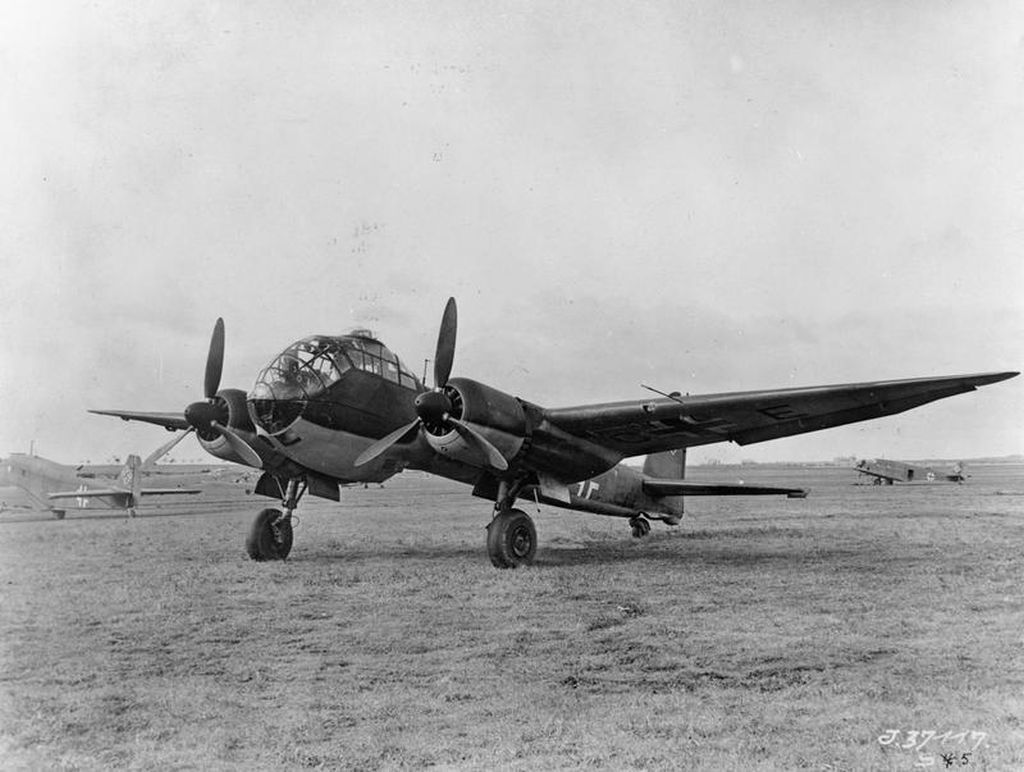
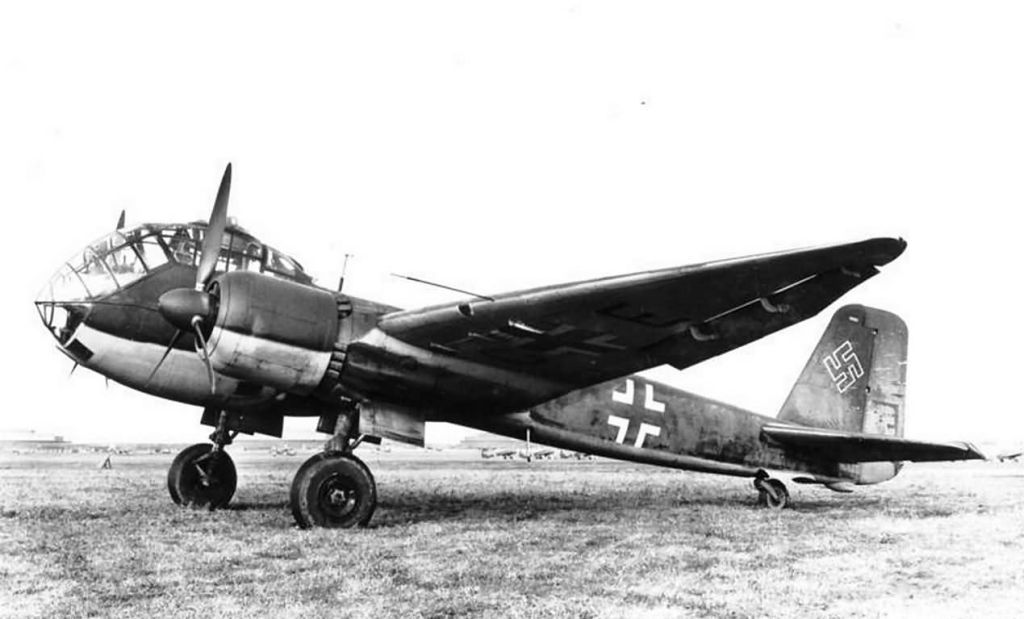
Ju 188 A & E
The Ju 188 was designed to be fitted with either the 1,750 PS (1,290 kW, 1,730 hp) Jumo 213A or 1,700 PS (1,250 kW, 1,680 hp) BMW 801 G-2 engines without any changes to the airframe, with the exclusion of the re-design for Jumo-powered examples, of the annular radiators from their Jumo 211 layout for the A-series to better match the more powerful 213's cooling needs, while still using essentially the same broad-chord three-blade propellers as the A-series did. It was originally intended that both would be known as A models, but the naming was later changed: the Ju 188A model powered by the 213, and the Ju 188E by the 801.
The first three production Ju 188 E-1 machines were delivered with the BMW engines in February 1943, another seven in March, and eight in April. A conversion testing unit was formed up in May, and after testing were attached to an operational unit, with the first mission, an attack by three Ju 188E-1s on a factory in Lincoln, Lincolnshire taking place on 18 August 1943. By the end of the year, 283 Ju 188s had been delivered (including Ju 188Fs), and two new factories were added to the production effort.[4] Most operational machines differed from the prototypes only in having a 20 mm MG 151/20 cannon in the nose and dorsal turrets in place of the 13 mm (.51 in) MG 131. The MG 131 I was intended to be used in the Ju 188 E-1 or the G-2. But the heavy armament in the A and E series was the MG 151/20. The Ju 188 E-2 was built as a torpedo-bomber, but was identical to the Ju 188 A-3.
Although the A and E models were to have been delivered at the same time, the Jumo engine was still having difficulties getting into production. Nevertheless, the first Jumo powered Ju 188 A-1 versions were shipped only shortly after the BMW versions, albeit at a much slower rate. By the time delivery rates were finally picking up in late 1943, the Jumo was available in a new MW 50 methanol-water injection "boosted" version that delivered 1,648 kW (2,241 hp) for takeoff. With this engine, the planes were known as the Ju 188 A-2, and started deliveries in early 1944.
A modified version mounting a small FuG 200 Hohentwiel sea-search radar set under the nose and shackles for a torpedo for naval strike missions was delivered as the Ju 188 E-2, and with the Jumo as the Ju 188 A-3. The only other difference was the removal of the outer pair of wing bomb shackles.
For all its good points, the Ju 188 was only a small improvement over the Ju 88 it was supposed to replace. The bombload and bomb bay was no larger than the earlier plane, so although it could handle a larger load by mounting externally, doing so hurt performance. Even then the performance was rather poor considering all the effort - only 523 km/h (325 mph) or less. The dorsal turret had only one gun in it, yet the type retained the single-gun flexible position only a few centimeters away from it. In the meantime, the various projects to finally provide the plane with real tail armament were all abandoned.
Delivery problems of the Jumo 213 were never entirely sorted out, and the only model to be built in large numbers were the E series with the BMW 801. Even then so few were available that they were generally given out to Ju 88 units, who flew them on "special" missions where the longer range or better performance would be helpful.
Some 500 Ju 188A and E variants were built up until the summer of 1944, when production ceased.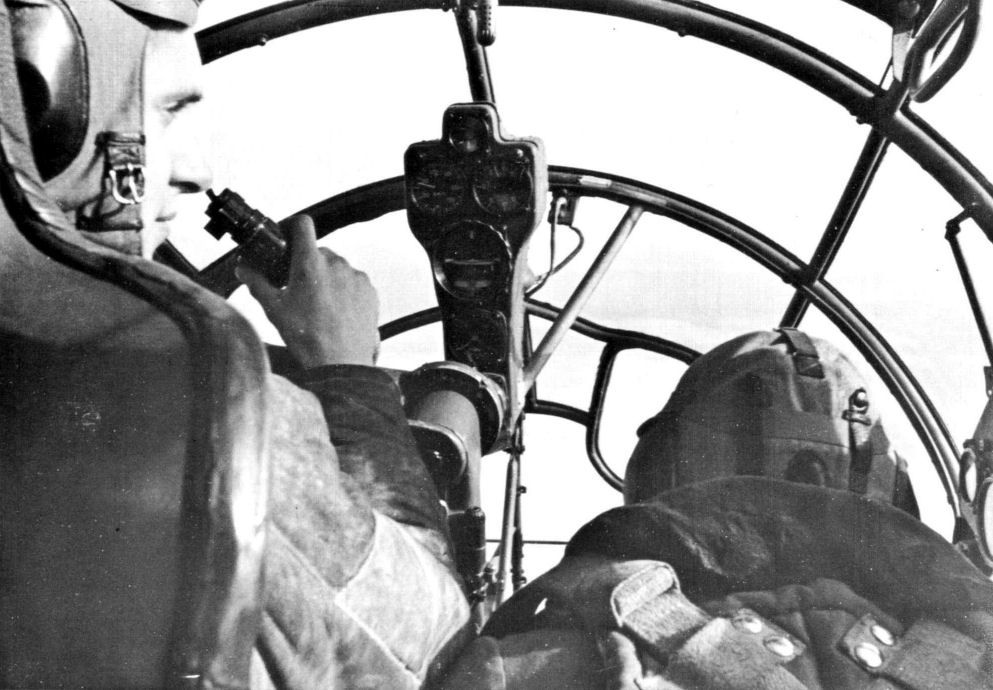
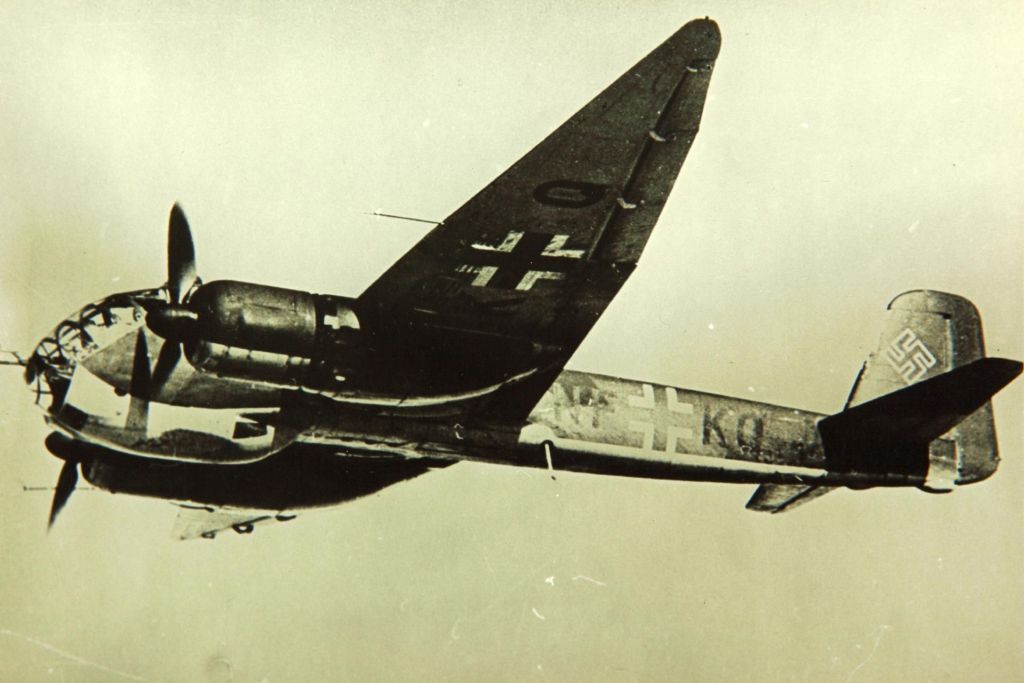
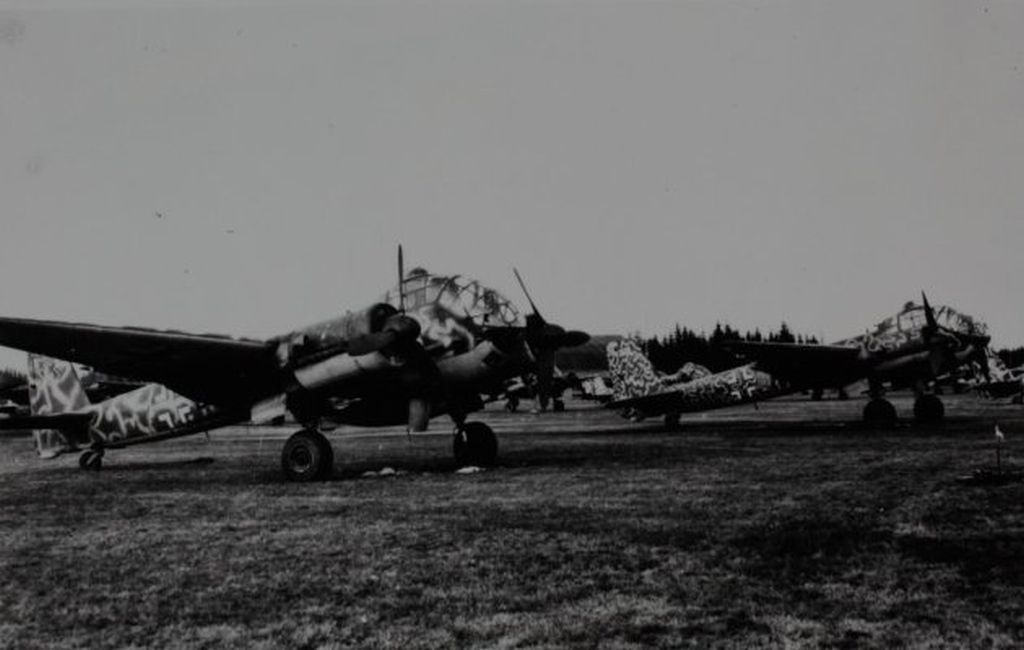
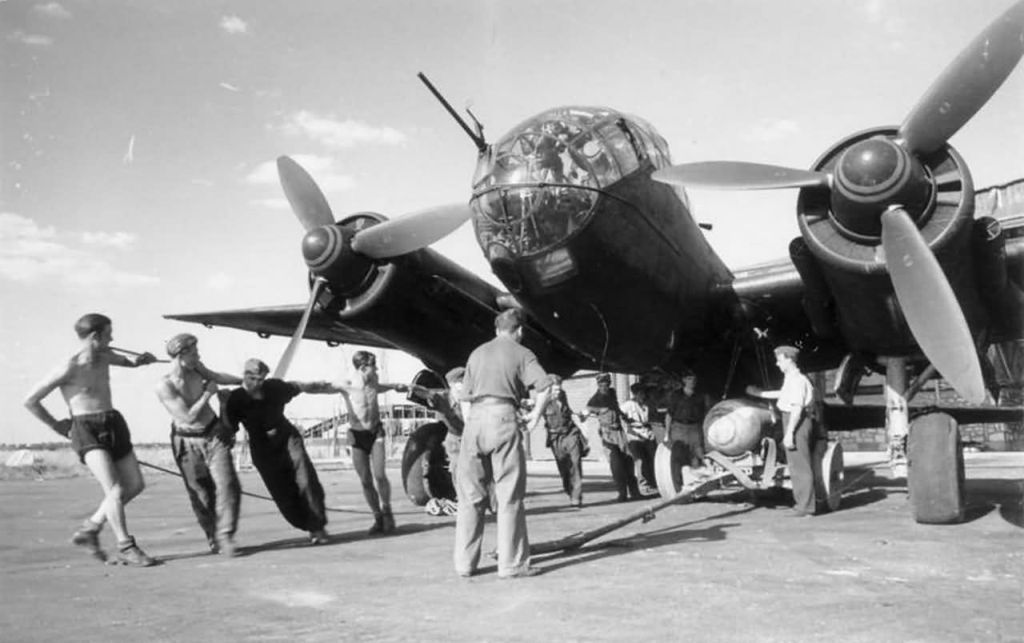


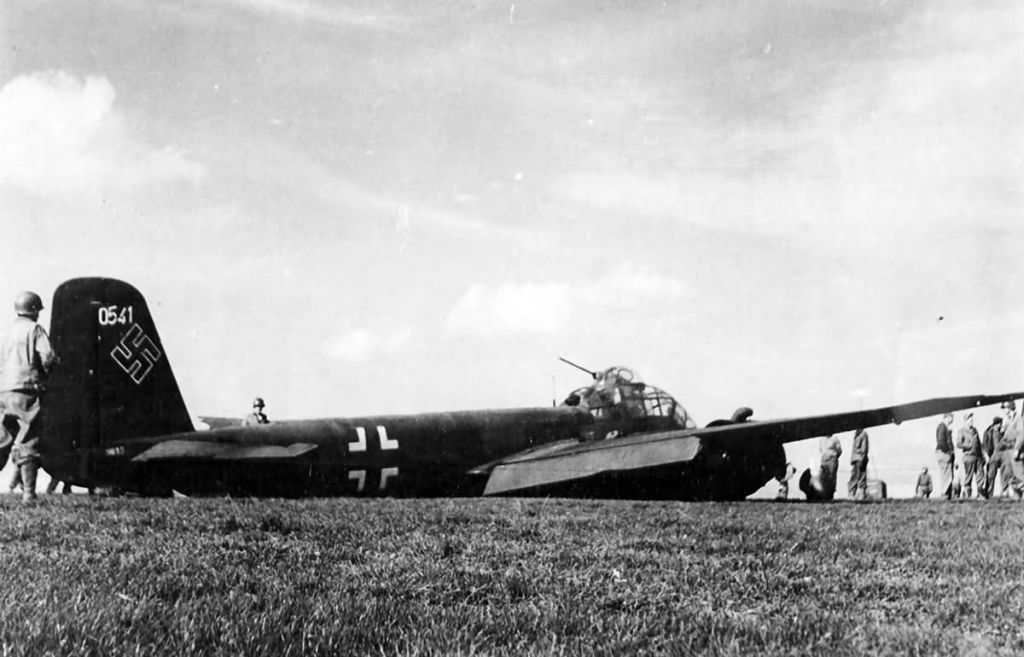
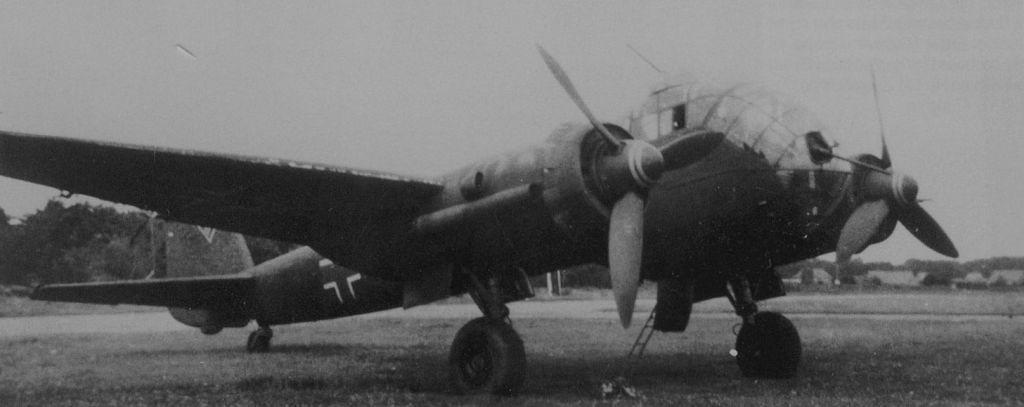
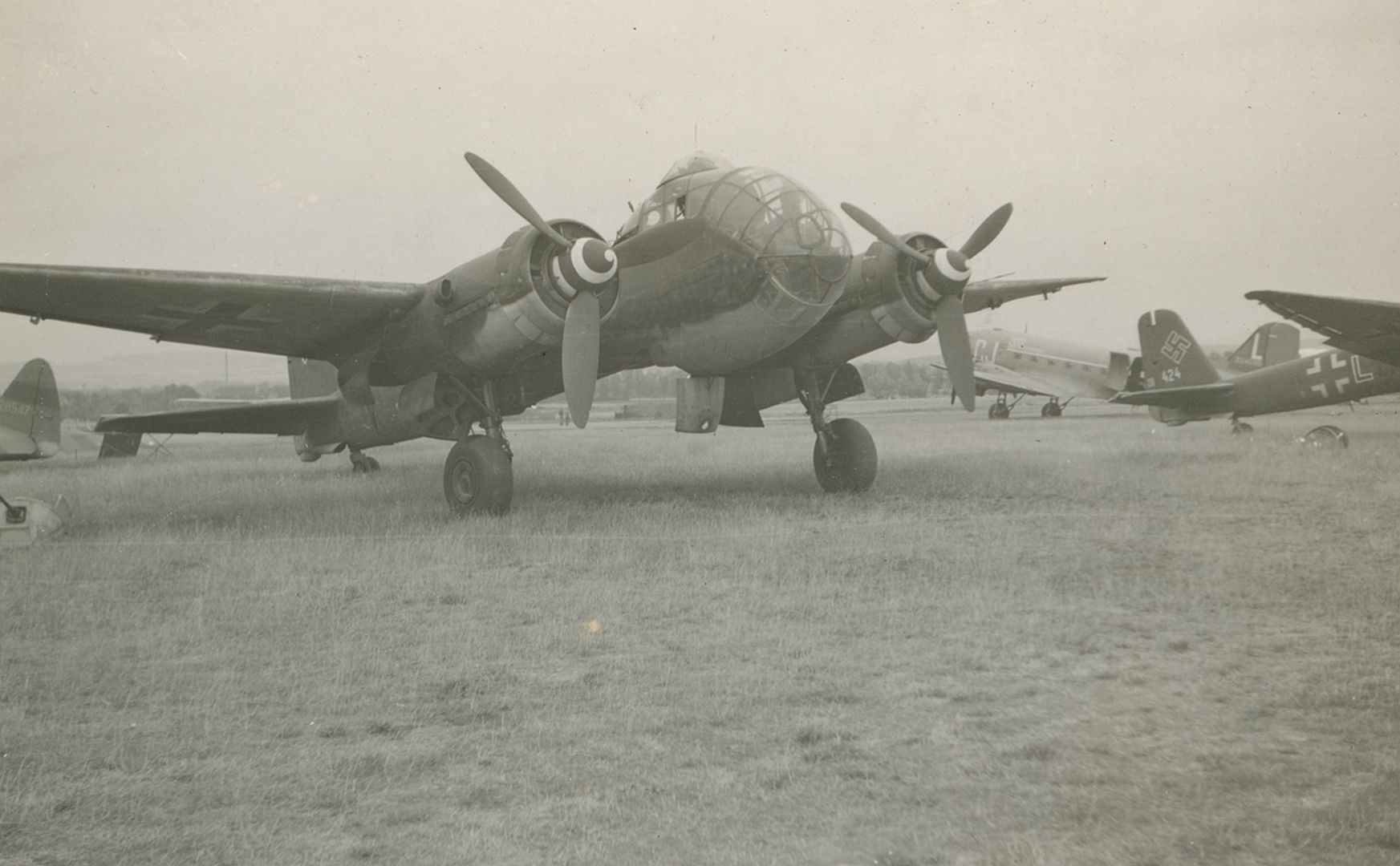
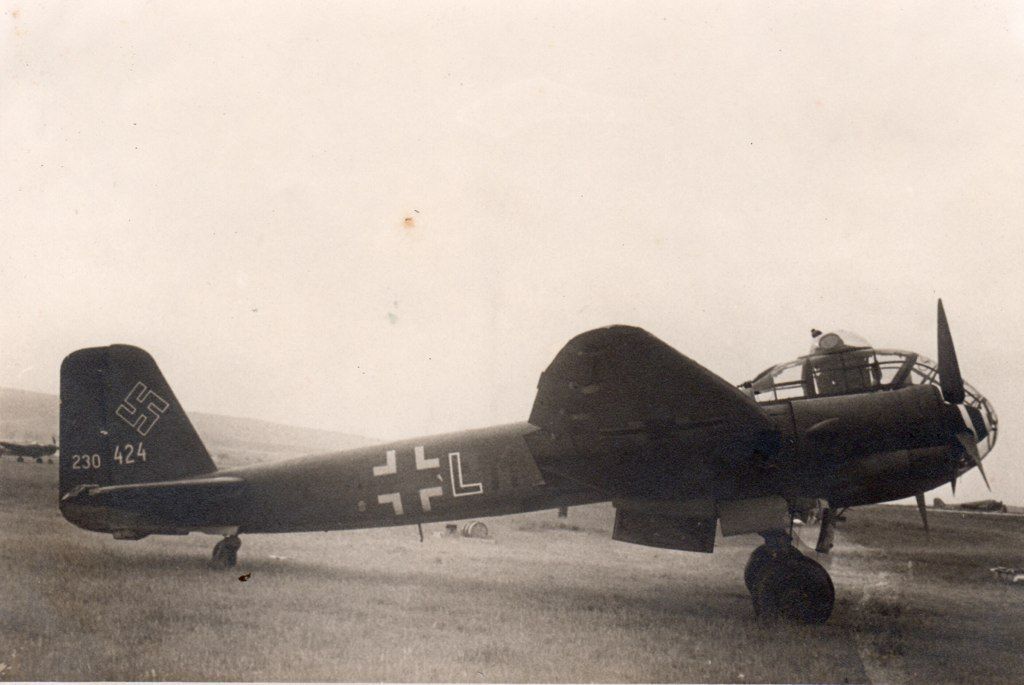
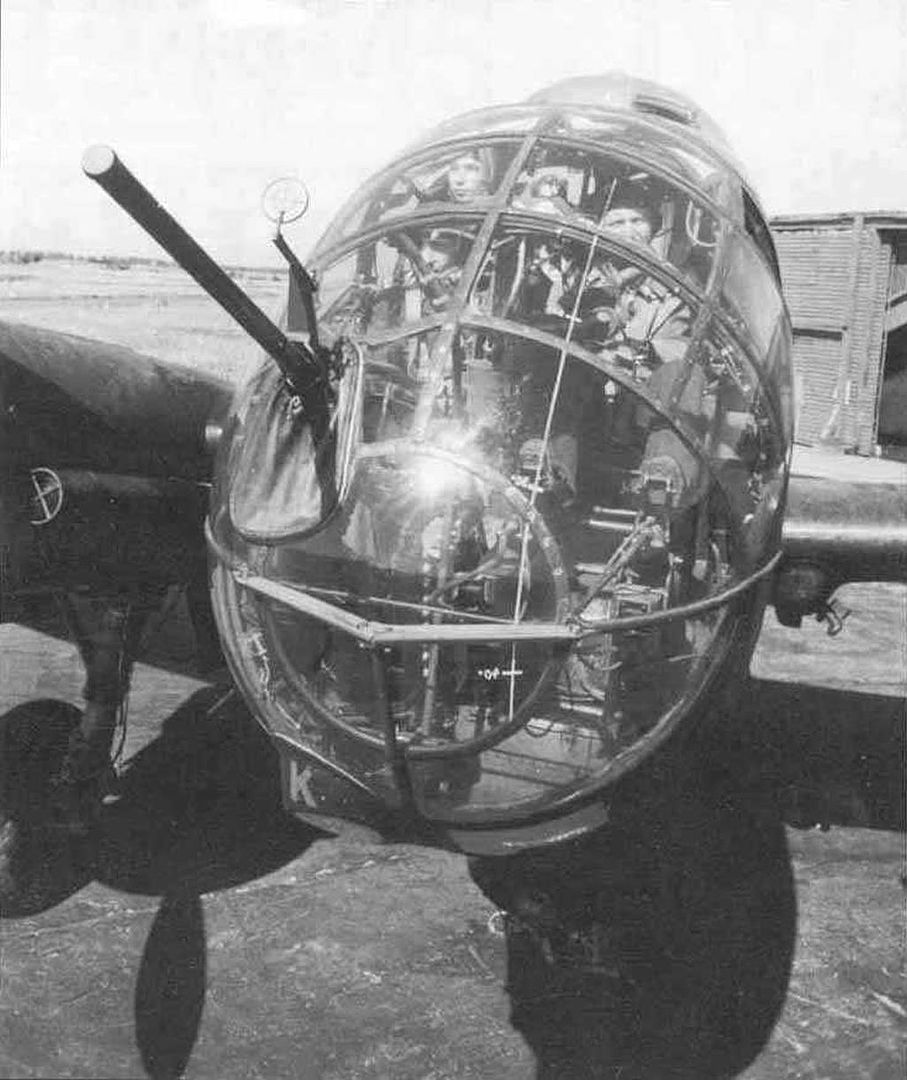
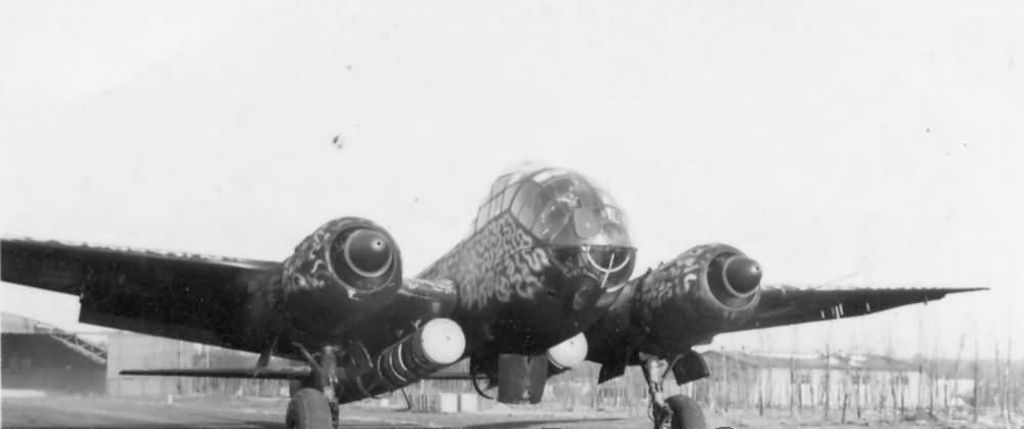
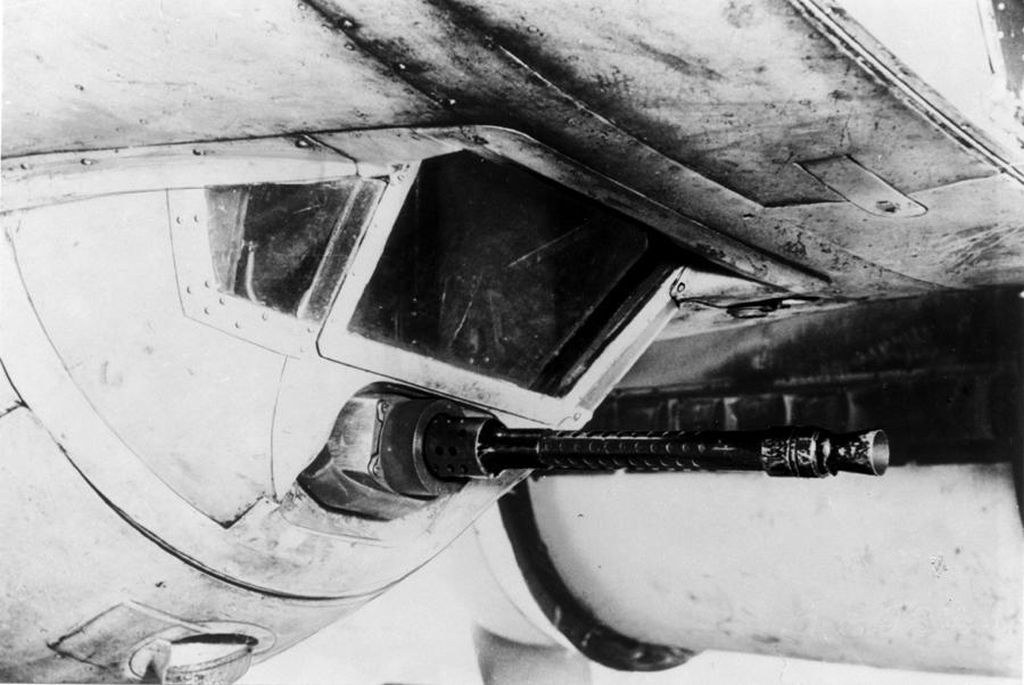

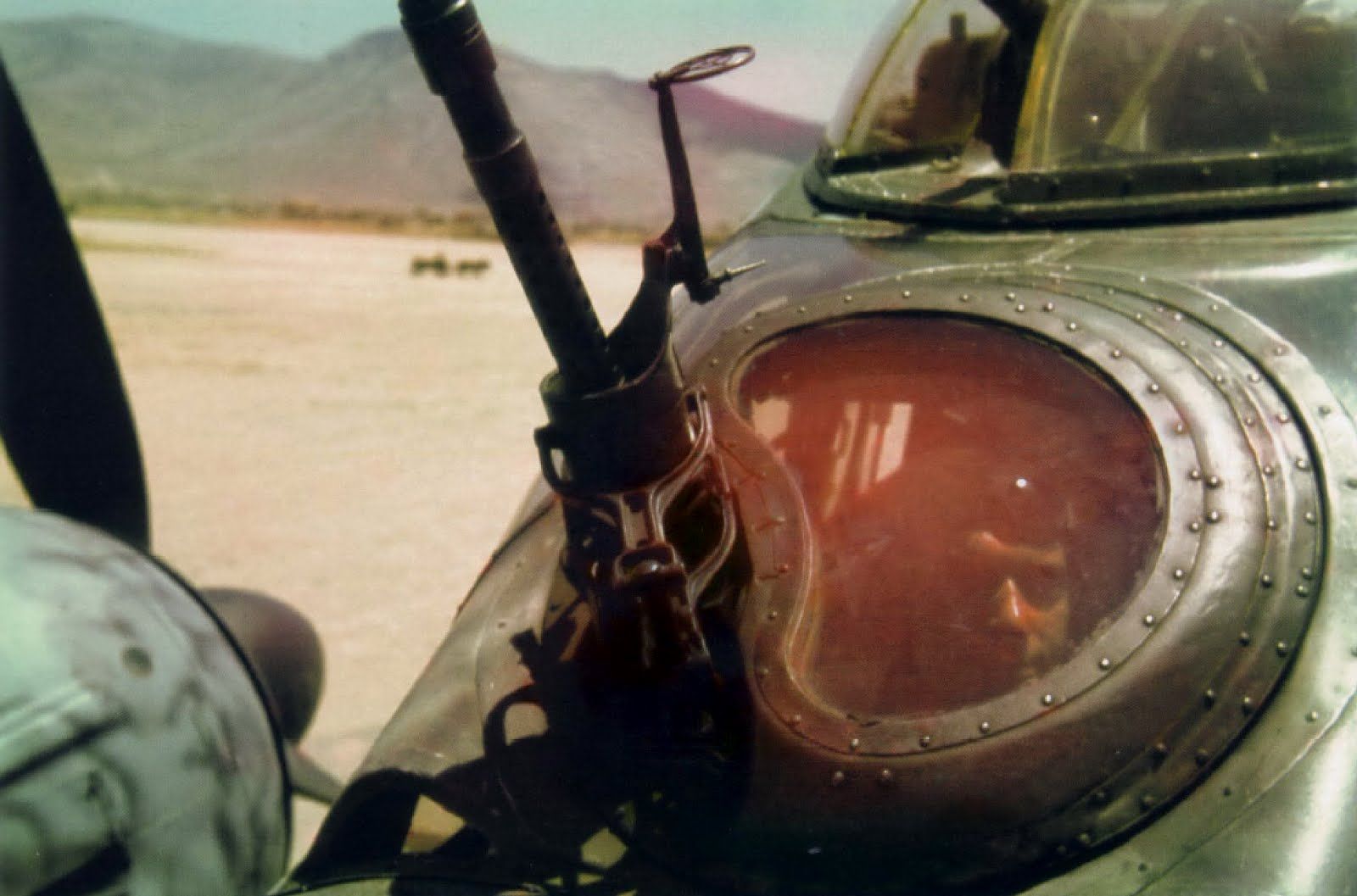
Ju 188 C
It was planned all along to skip over a "B model" to avoid confusion with the original Ju 88 B, but in the original planning the A and E models would both be called A's. The Ju 188 C would thus be the next model in line.
The C series was built to the extent of a single example, by modifying one of the few A-1 machines. To this, they added the new power-operated, remotely operated FA 15 turret in the tail. The turret mounted two 13 mm (.51 in) MG 131s, aimed with a double-periscope (top and bottom) system mounted in the cockpit.
This modification would have greatly improved defensive firepower, always lacking on German designs, but reliability was so poor it was decided to abandon the system.
Ju 188 D & F
In early 1944, it was decided to focus on reconnaissance versions of the A and E models The airframe was modified with the removal of the bomb aimer and the forward gun, and additional fuel cells were added to extend the range to 3,400 km (2,110 mi). The Ju 188 D-1 was otherwise similar to the A-1, and the Ju 188 D-2 fitted nose radar for naval reconnaissance. Similar conversions of the E models were the Ju 188 F-1 and Ju 188 F-2.
Ju 188 G & H
One problem with the Ju 88 that carried into the 188 was the lack of internal room for bomb storage. Both carried the majority of their bombload on the outside of the plane on racks under the wing, where it greatly affected performance. This was to have been addressed in the G and H models, which extended the fuselage downward for more room with the addition of a wooden pannier.
This modification also left enough room at the tail to fit a manned turret in place of the C model's remote-control one. However this system proved to be just as limited as the remote-control FA 15. It was so small that only the smallest men could fit into it, and left them with basically no ability to escape in an emergency. The RLM rejected the manned turret and planned on mounting the FA 15 even if it were unreliable. Oddly, the designs still possessed the Bola undernose feature for a rear-facing gunner, when this would no longer be needed and its removal would have greatly cleaned up the lines of the plane.
With the Jumo 213s now being sent to fighter production, the Ju 188 G-2 was to use the BMW 801 only, with the reconnaissance conversion known as the Ju 188 H-2. Neither entered production before the war ended.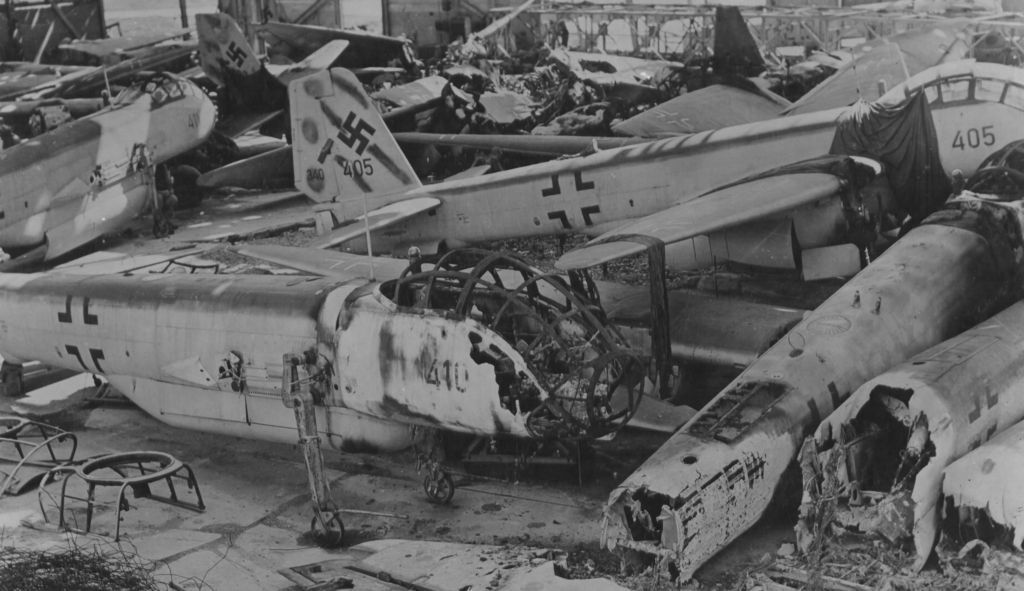
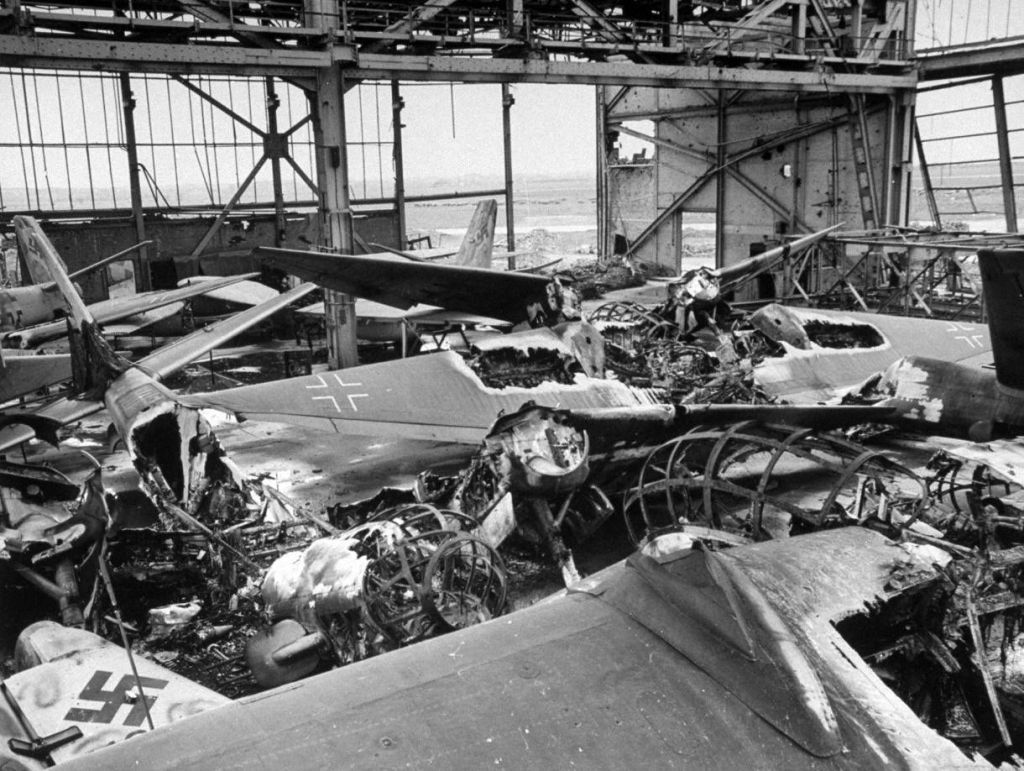
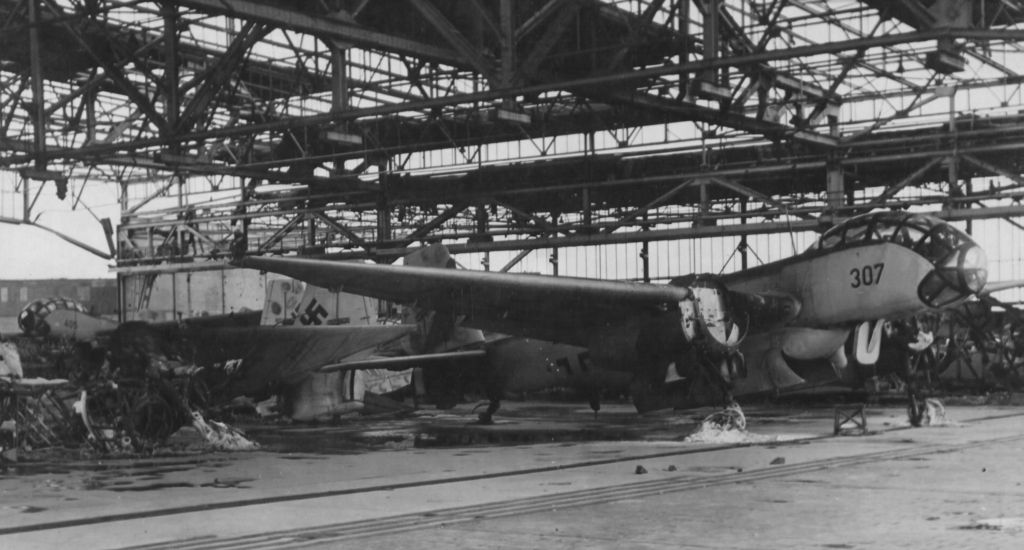
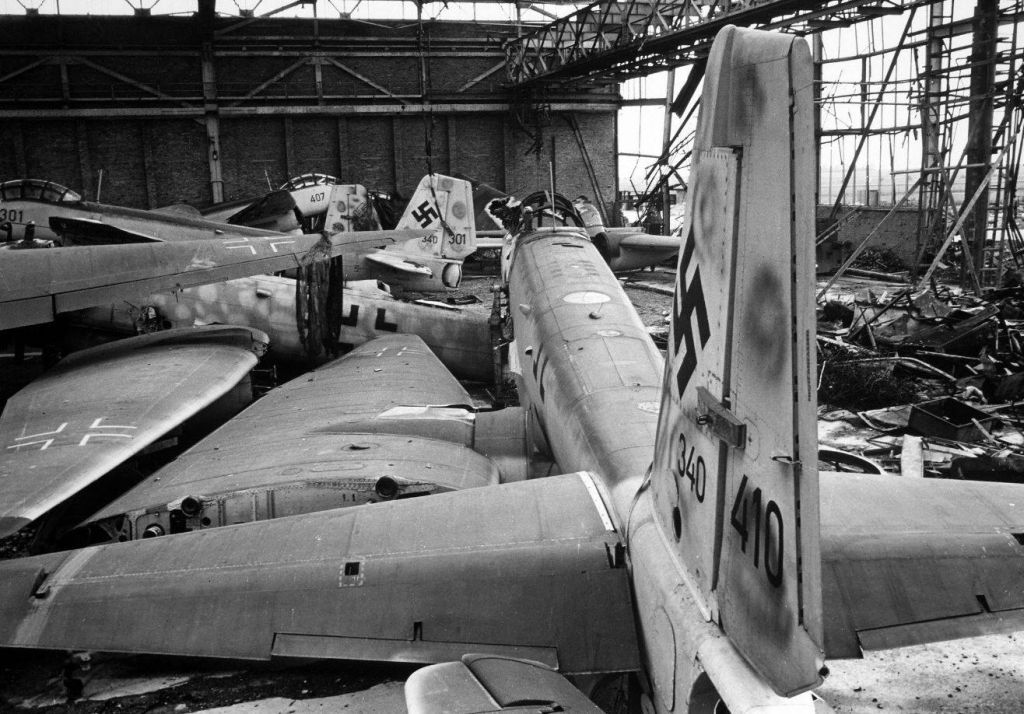
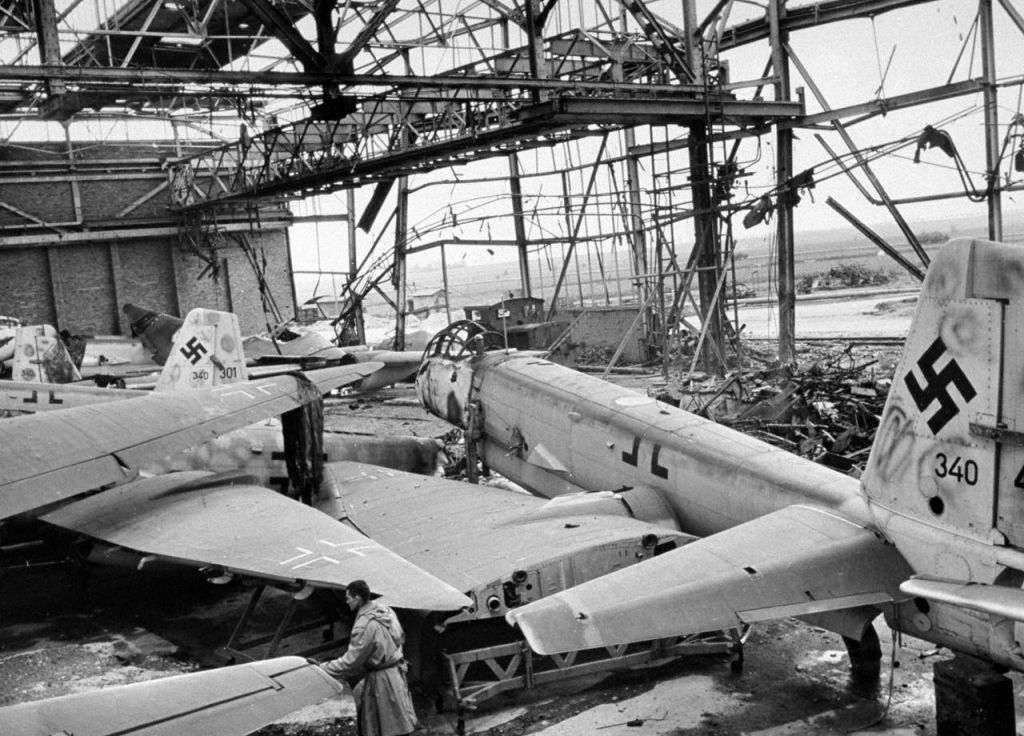
Ju 188 R
In the summer of 1944, three E models were modified as night fighters with the addition of radar and either four 20 mm MG 151/20s or two 30 mm (1.18 in) MK 103 cannons in the nose. However, the added visibility of the 188 was not useful in the night role, and because the added drag of the radar washed out any speed difference, the Ju 188 R-0 was not ordered.
High-altitude versions
In 1943, it was planned to upgrade the entire lineup with even more wing area and a pressurized cockpit for high-altitude work. A single basic airframe would be offered in three versions, the Ju 188J heavy fighter, Ju 188K bomber, and the Ju 188L reconnaissance version. As with the streamlined Ju 88S, all three late model Ju 188 designs did away with the Bola gondola, leading to a cleaner nose profile, and the bomber and reconnaissance versions mounted their loads in a long pannier under the central fuselage instead of the deeper fuselage of the G and H models.
Simpler versions of these with no defensive armament and even longer wings became the Ju 188S fighter and Ju 188T intruder. With Jumo 213E-1 engines 2,050 PS (1,510 kW, 2,020 hp) at take-off and 1,690 PS (1,240 kW, 1,670 hp) at 9,500 m (31,400 ft), the Ju 188T could reach 700 km/h (440 mph). Operating at this altitude, the Ju 188S could carry only 800 kg (1,760 lb) of bombs.
Before any of these could start production, the entire lineup was renamed the Ju 388, the vastly improved performance warranting a different 8-388 airframe number from the RLM for the design.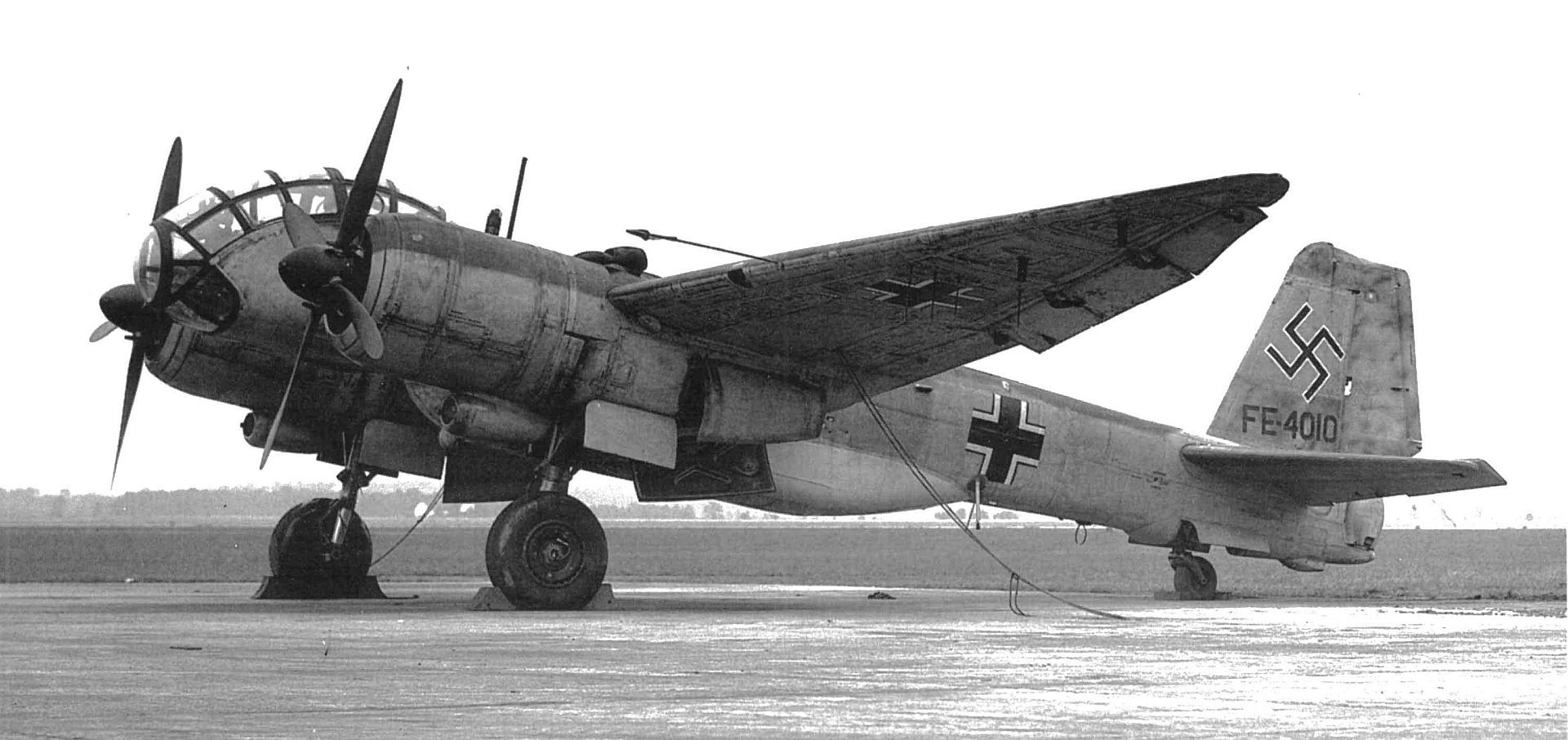
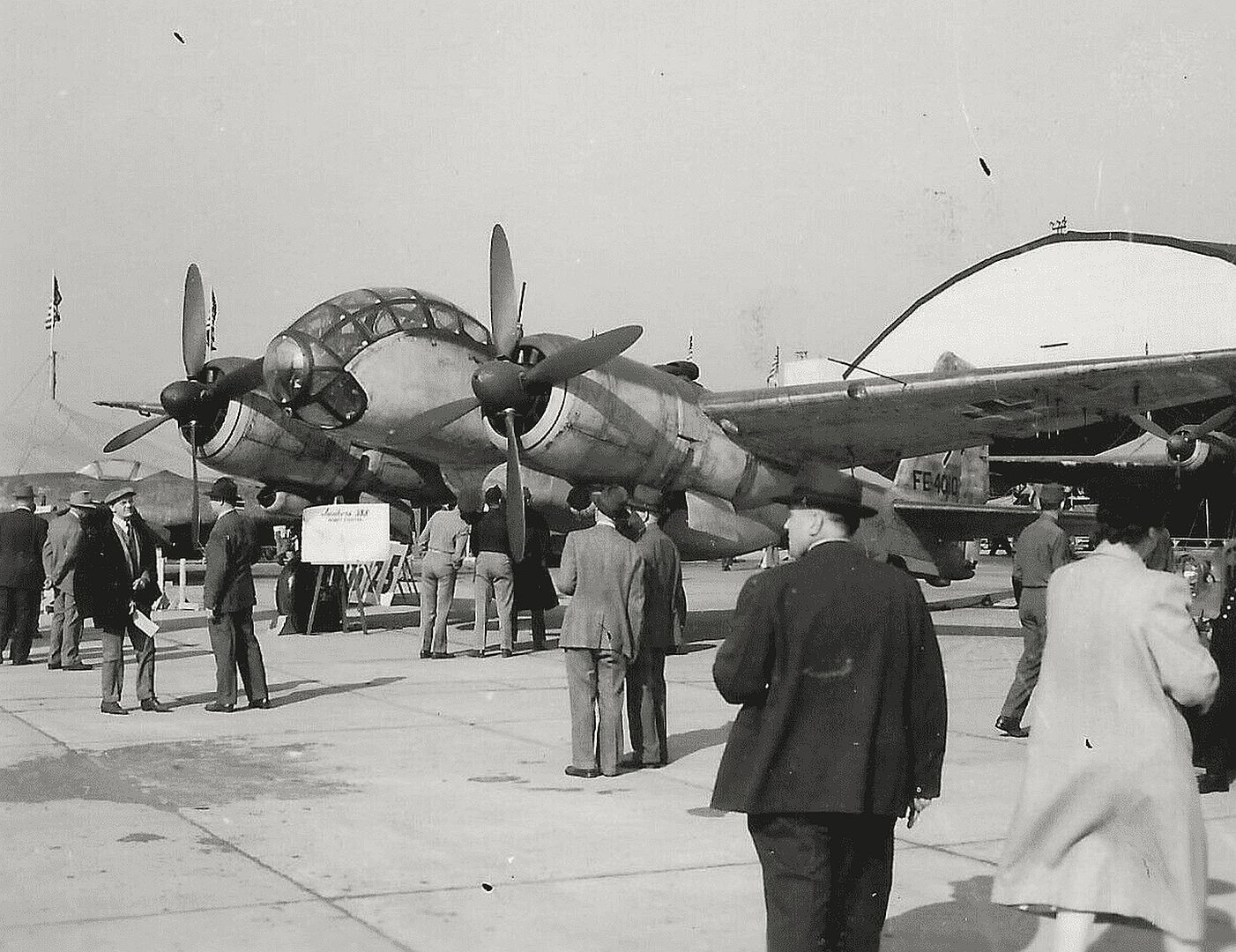
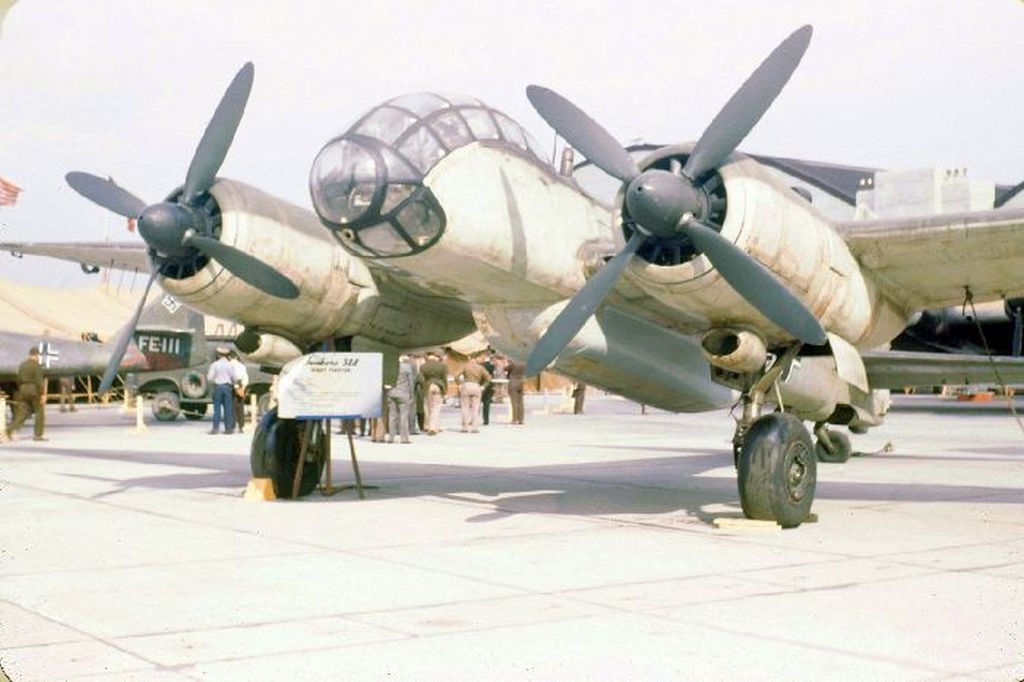
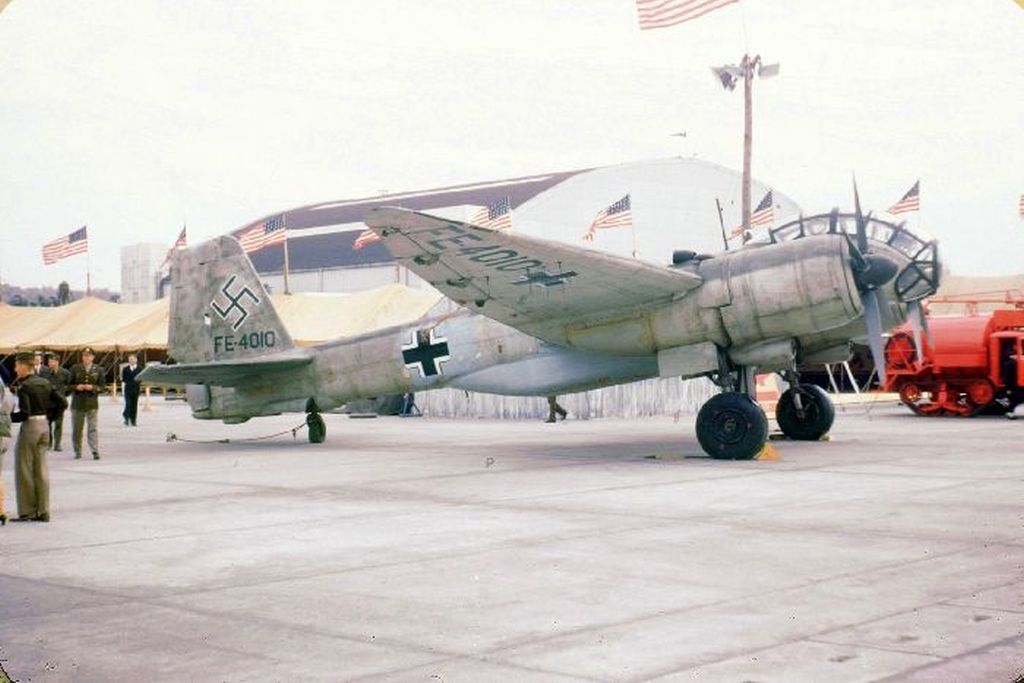
Post war Aviation Navale operated several captured Ju 188s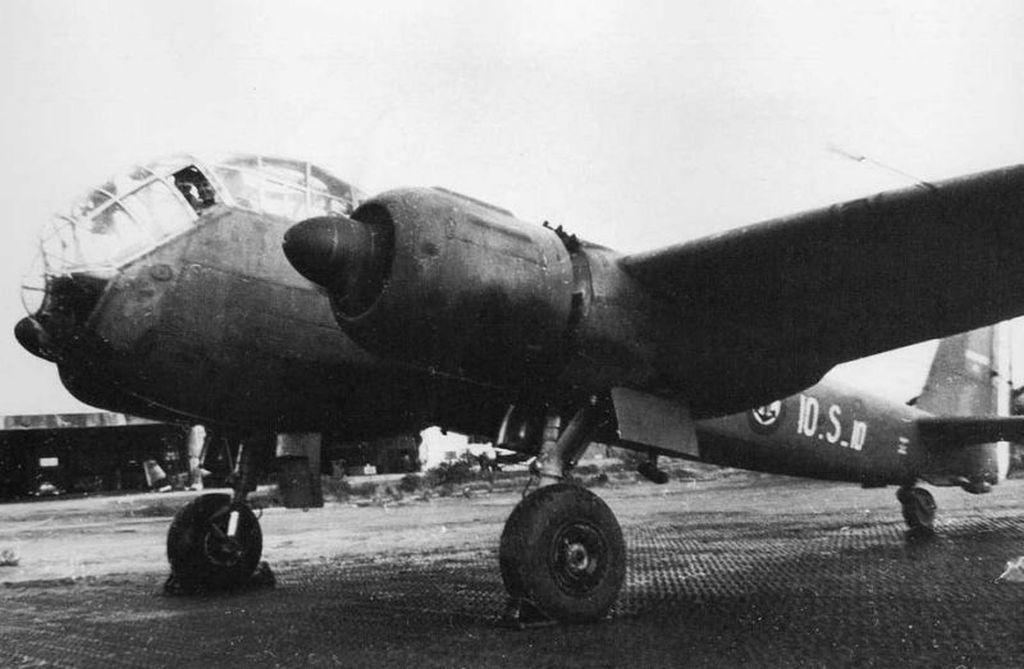
The Royal Air Force operated at least two captured machines post war, an A-2 and A-3 (Wrk Nr 190335 of 9./KG 26). The A-3 surrendered to British forces after landing at Fraserburgh on 2 May 1945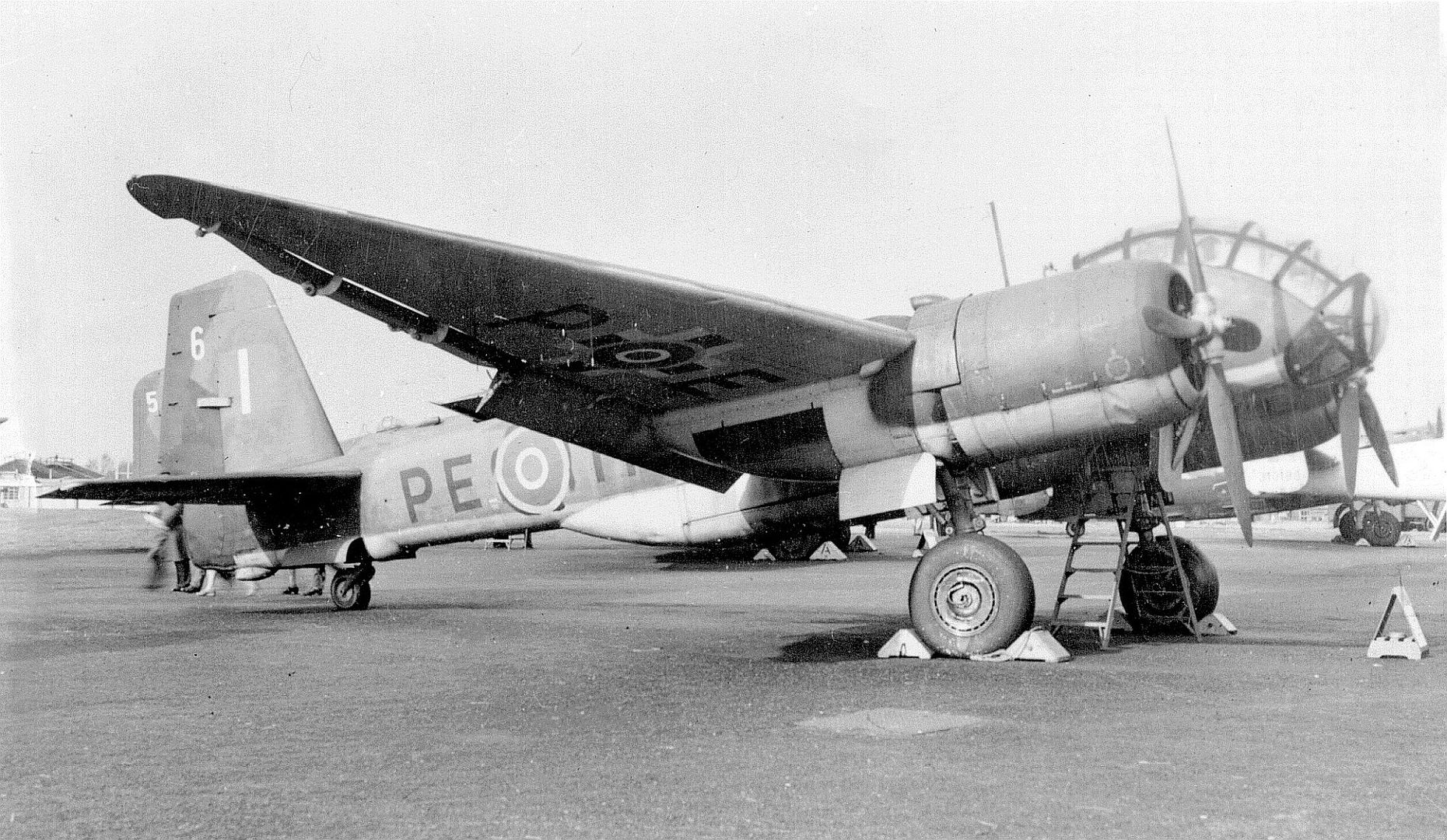
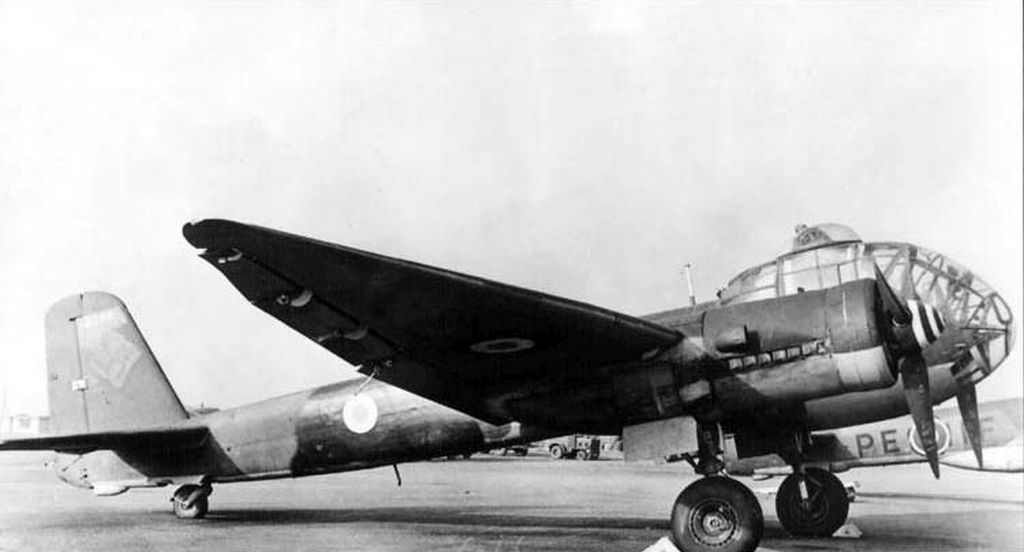
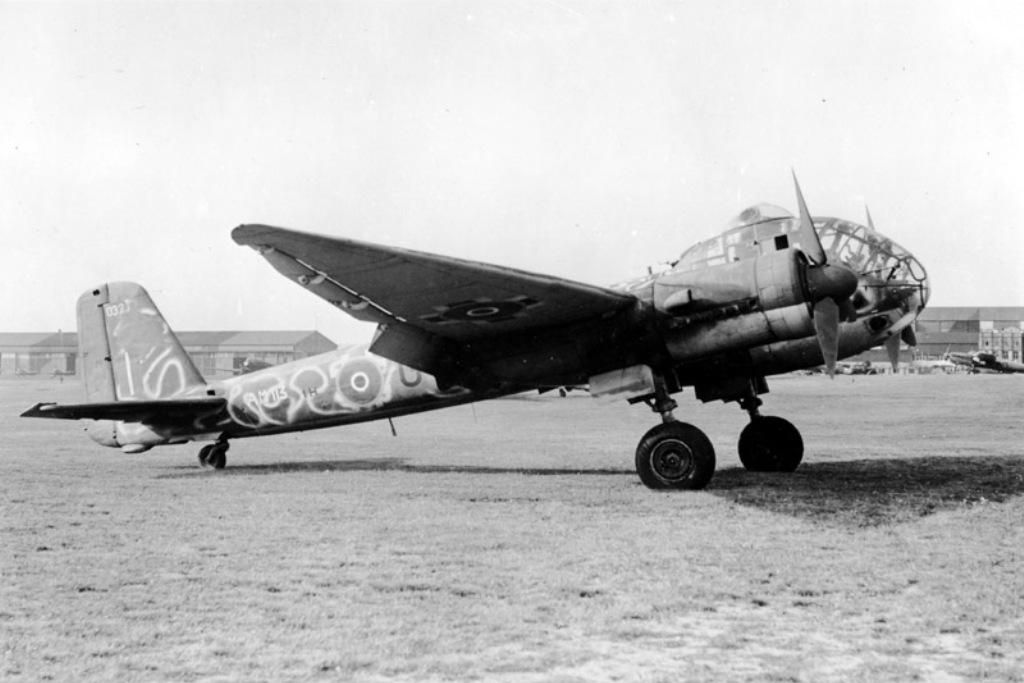

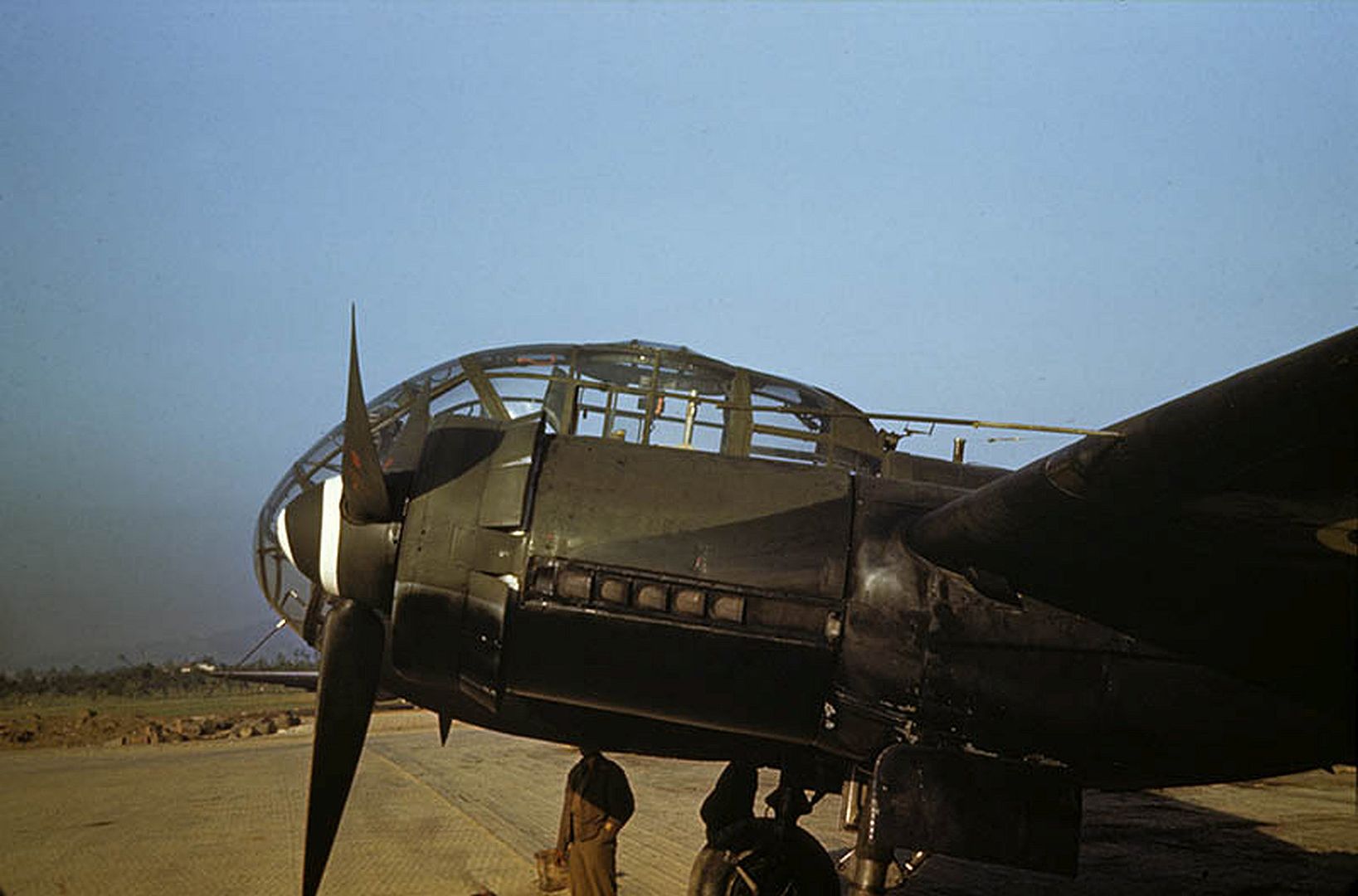
General characteristics
Crew: 5
Length: 15 m (49 ft 1 in)
Wingspan: 22 m (72 ft 2 in)
Height: 4.4 m (14 ft 7 in)
Wing area: 56 m? (603 ft?)
Empty weight: 9,900 kg (21,825 lb)
Loaded weight: 14,500 kg (31,967 lb)
Powerplant: 2 ? 1 BMW 801 G-2, 1,700 PS (1,250 kW) each
Performance
Maximum speed: 499 km/h (310 mph)
Range: 2,190 km (1,360 mi combat)
Service ceiling: 9,500 m (31,170 ft)
Wing loading: 258.9 kg/m? (53.0 lb/ft?)
Power/mass: 0.175 kW/kg (0.106 hp/lb)
Armament
Guns: 1 ? 20 mm MG 151/20 cannon
3 ? 13 mm (.51 in) MG 131 machine gun
Bombs: 3,000 kg (6,612 lb)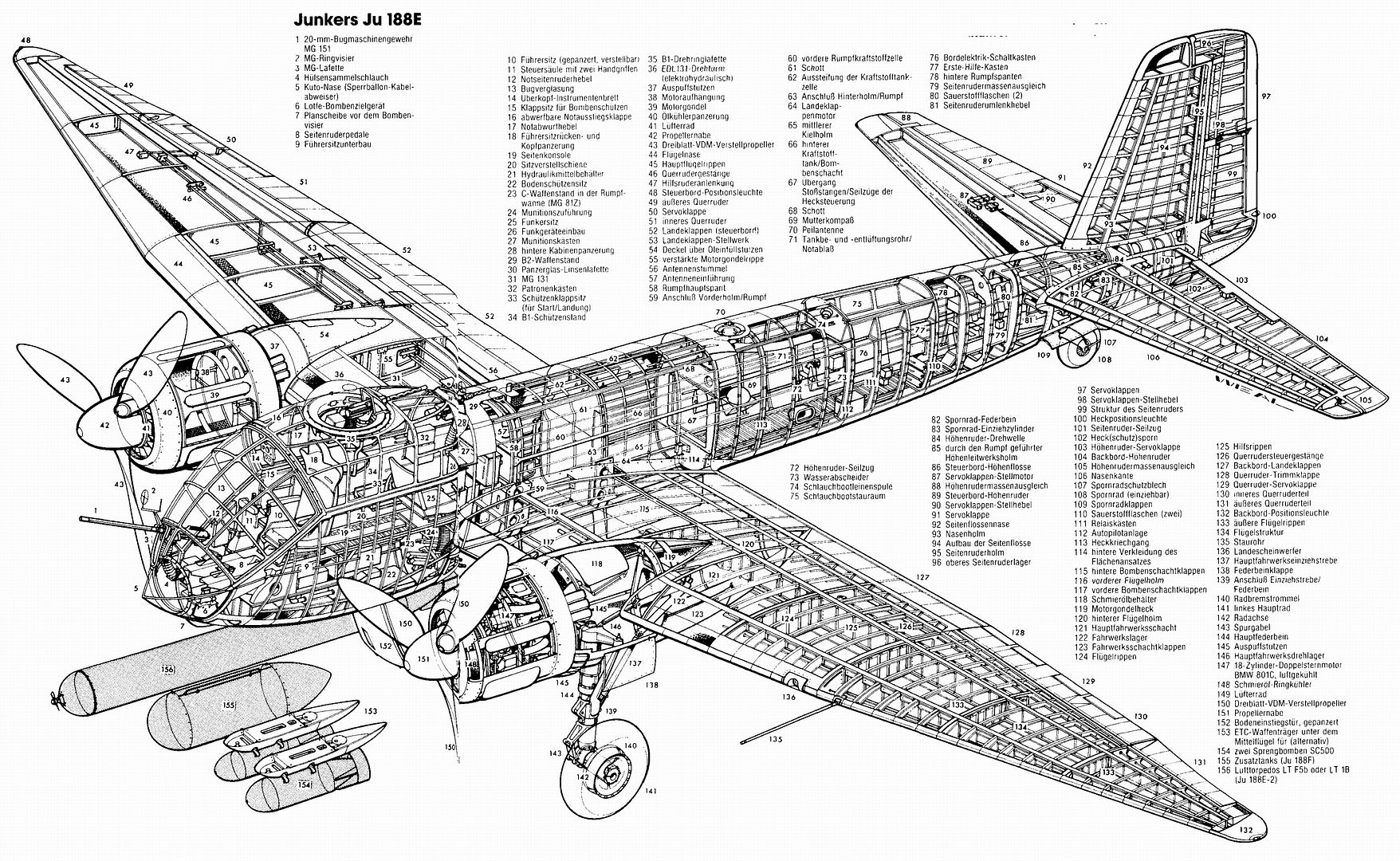
Text from Wikki.
Post a reply
- Go to Previous topic
- Go to Next topic
- Go to Welcome
- Go to Introduce Yourself
- Go to General Discussion
- Go to Screenshots, Images and Videos
- Go to Off topic
- Go to Works in Progress
- Go to Skinning Tips / Tutorials
- Go to Skin Requests
- Go to IJAAF Library
- Go to Luftwaffe Library
- Go to RAF Library
- Go to USAAF / USN Library
- Go to Misc Library
- Go to The Ops Room
- Go to Made in Germany
- Go to Campaigns and Missions
- Go to Works in Progress
- Go to Juri's Air-Raid Shelter
- Go to Campaigns and Missions
- Go to Works in Progress
- Go to Skinpacks
- Go to External Projects Discussion
- Go to Books & Resources
